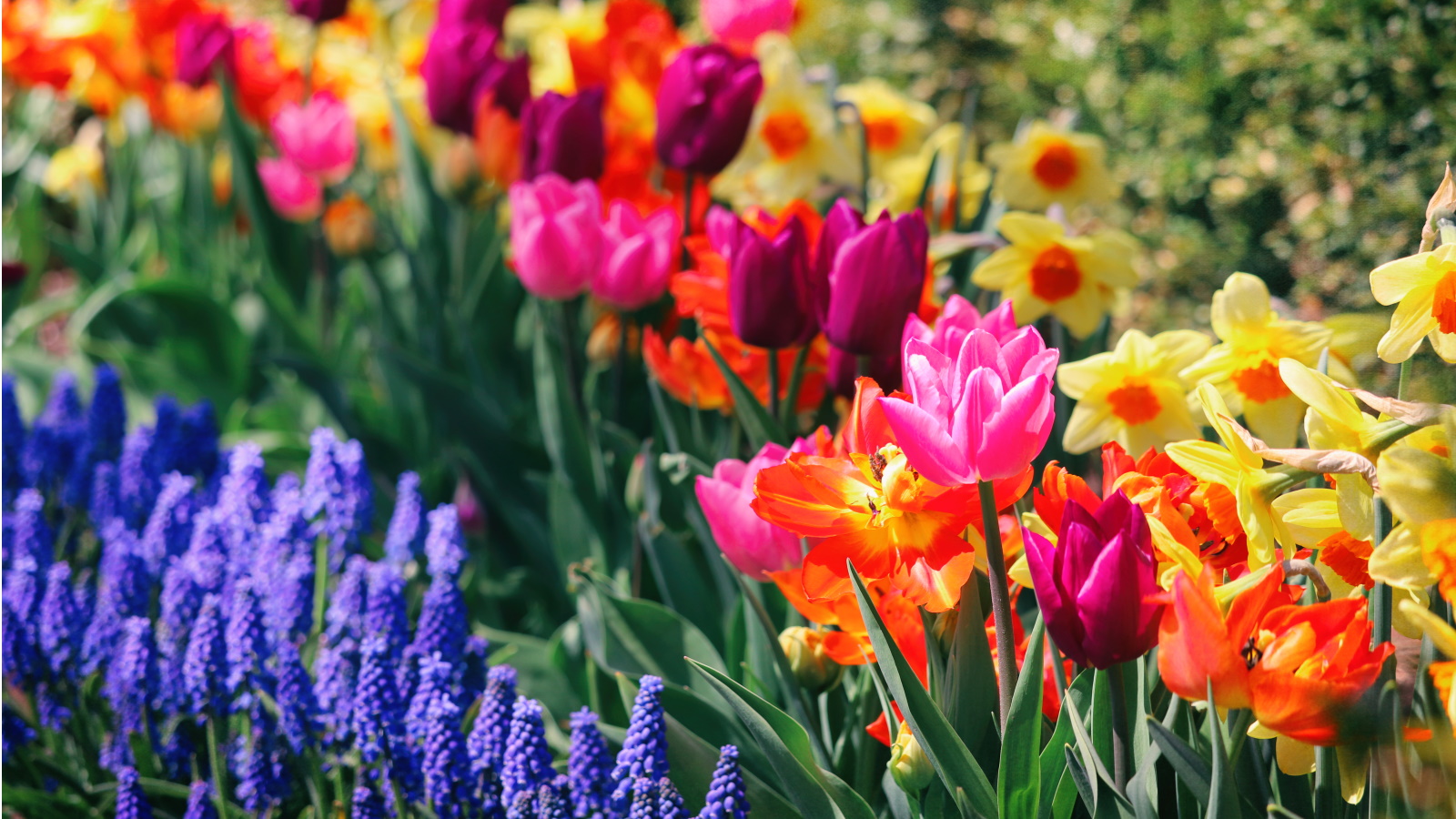
Catching sight of those first shoots in spring marks the start of the garden coming back to life for the warmer months. Welcoming early bloomers, such as snowdrops and winter aconites, can be a welcome relief from the cold and a sign of better weather to come.
If you want a spectacular display of spring bulbs next year, then fall is the time to get out into the garden and start planting. There's a good range of spring bulbs to plant that can bring color and enjoyment to a yard of any size come spring, but getting the planting time right is key to successful growing.
No matter where you choose to grow them, you should prepare to plant spring bulbs in fall. If you're looking for some inspiration for planting bulbs in groups or even if you're curating spring planters, we've got the ultimate list of the best spring bulbs to plant in fall for you to explore and consider.
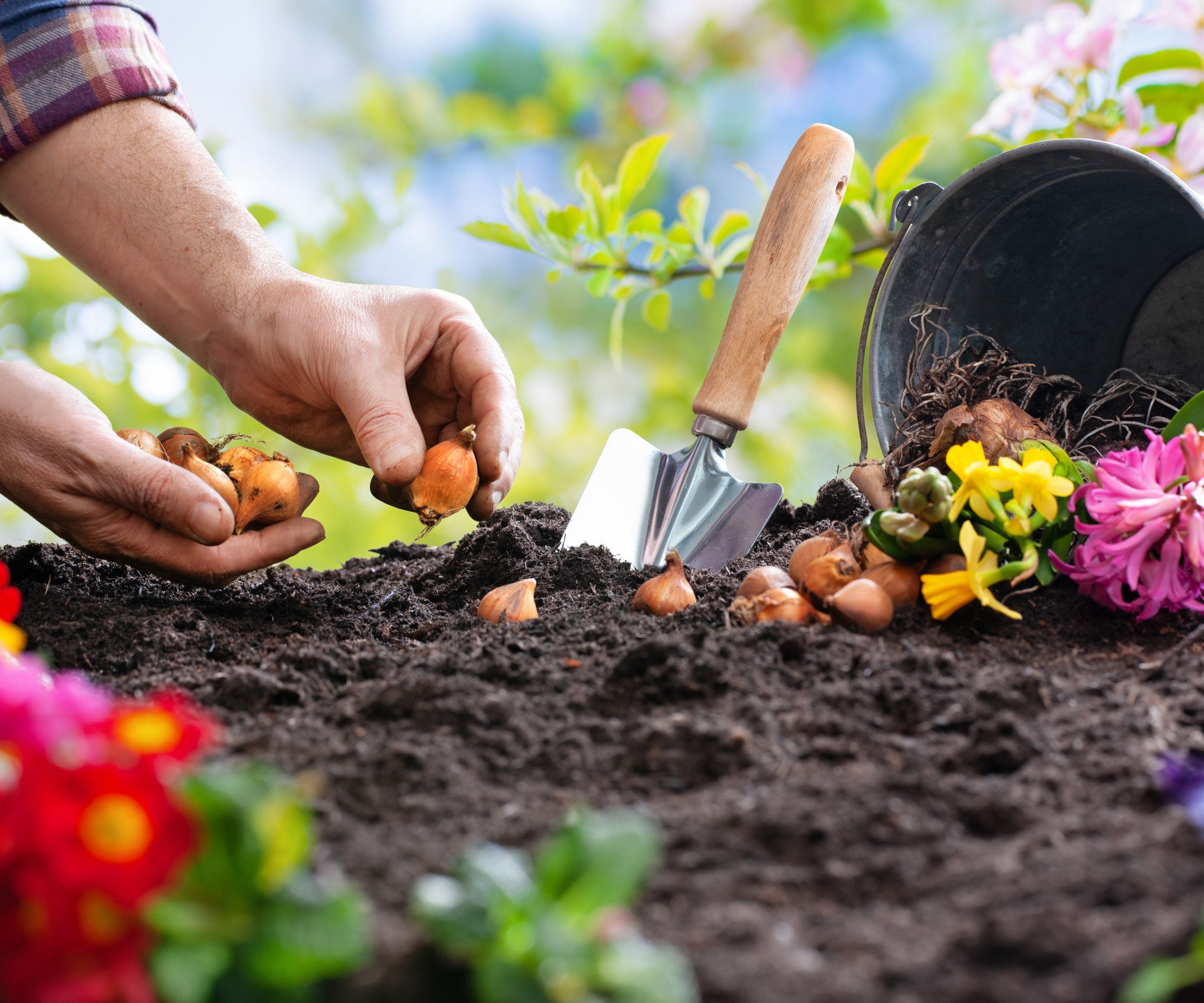
13 spring bulbs to plant in fall
Choosing to plant bulbs in fall is wise if you want your spring bulbs to sprout and bloom in time for the spring season. With so many wonderful and special spring flowers to choose from, it can be overwhelming to know which to get your hands on. But don't worry, we've compiled an expert list of the best spring bulbs to plant in fall so you can get to work in the yard this season.
1. Snowdrop
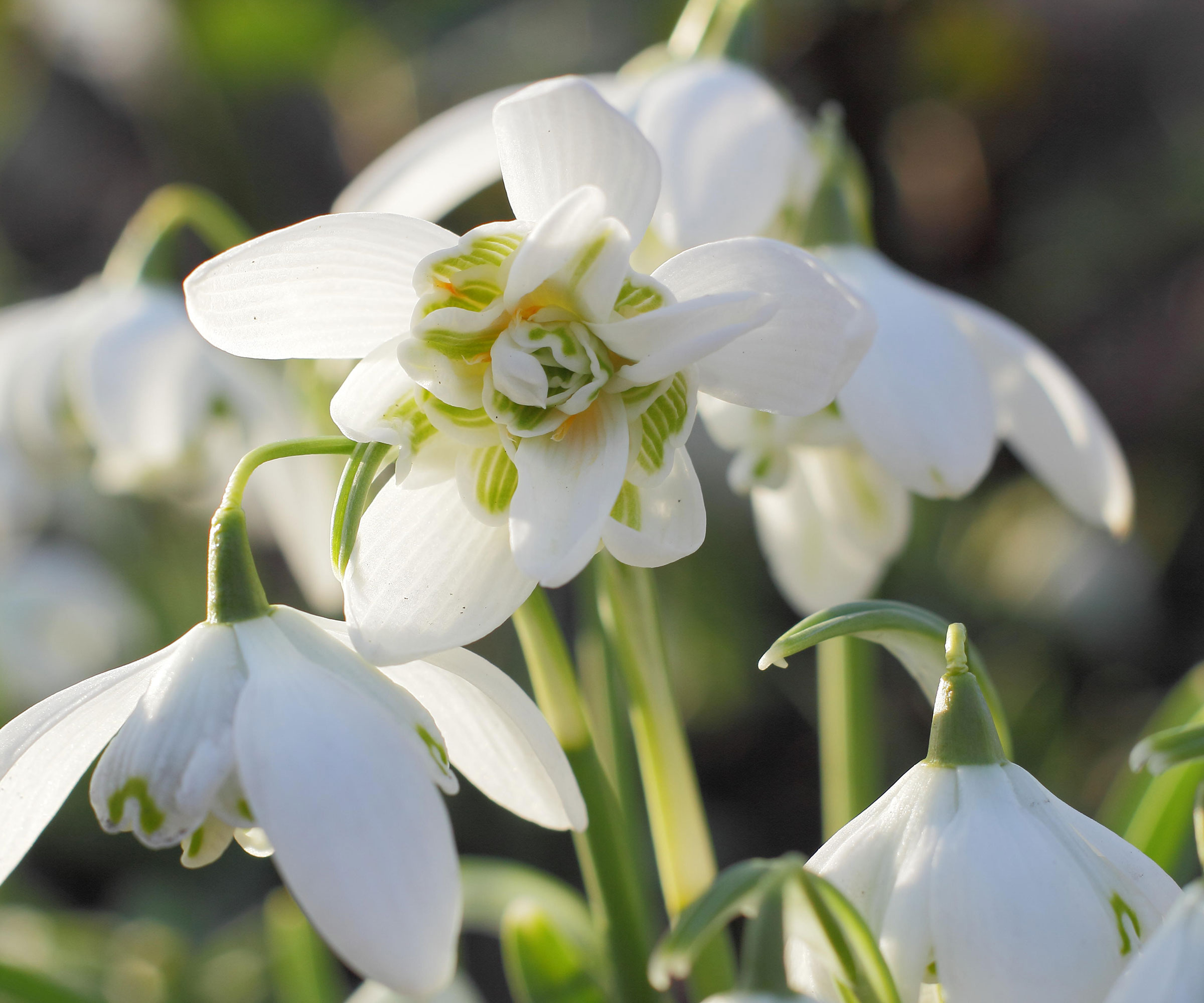
- US hardiness zones: 3-7
- Planting time: October to November
- Flowering time: Early spring
Usually hailed as the first sign of a new spring, snowdrops (Galanthus) are famed for their small white bell-shaped flowers. There is a large amount of different snowdrops to choose from, with these perennial bulbs becoming increasingly popular and rare varieties fetching large sums of money from galanthophiles.
Snowdrop bulbs are planted in fall around October and November, while snowdrops ‘in the green’ are planted in spring. If you do buy bulbs they want to be planted quickly as they have a tendency to dry out fast.
These spring bulbs want to grow in moist but well-drained soil and, as a woodland plant, they like a partial-shade spot. You can grow any of the best snowdrops in pots, however you do need to take care the bulbs do not dry out in summer and bulbs should be transplanted into the garden after two years in a container.
If you aren't sure which type of snowdrops to try growing, these single snowdrop bulbs from Amazon are good place to start.
2. Daffodil
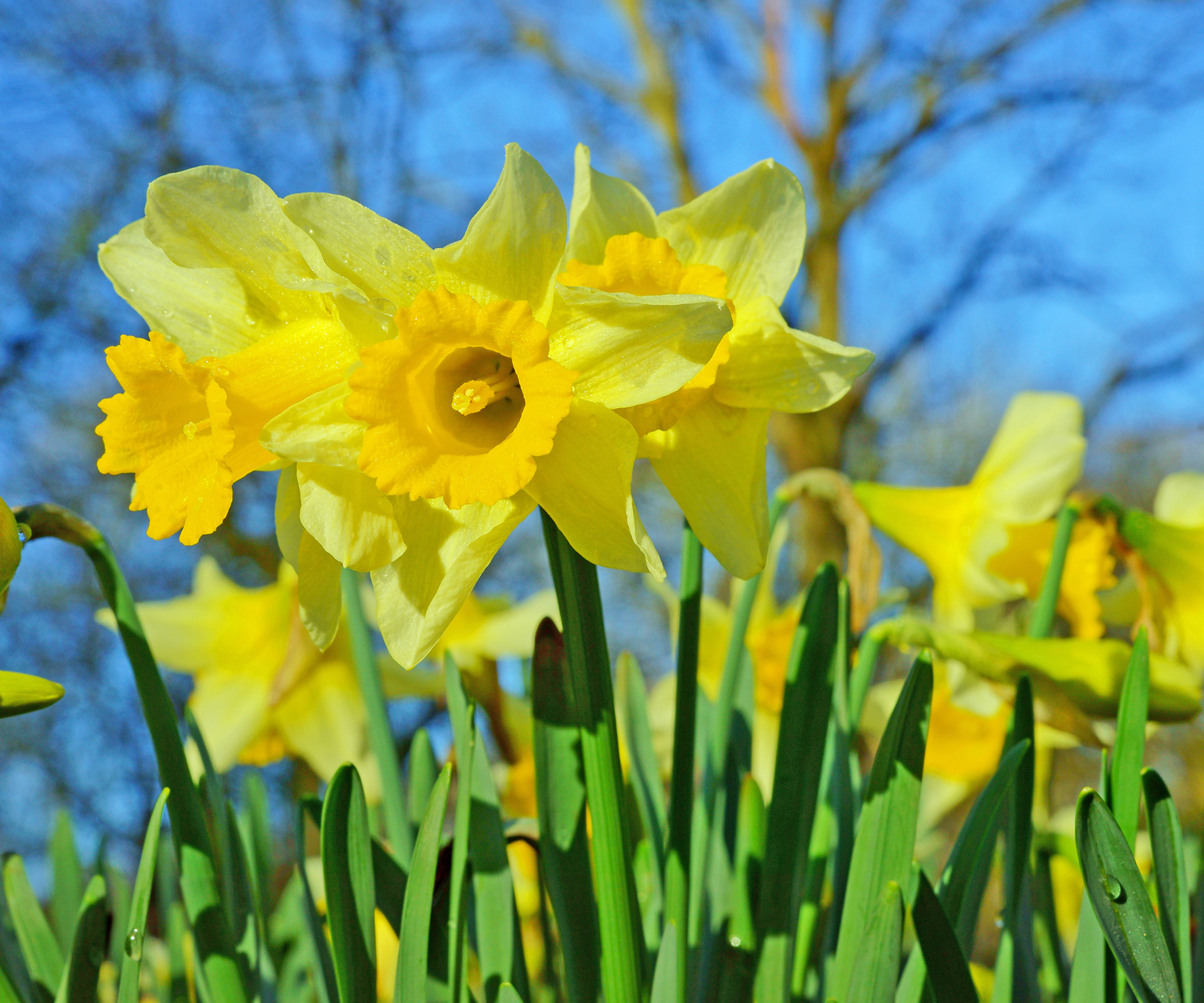
- US hardiness zones: 3-8
- Planting time: September or October
- Flowering time: Early-to-late spring
Daffodils are hugely-popular spring-flowering bulbs that are simple to grow and their distinctive yellow or white blooms come to the fore starting in February and flowering all the way through to May.
'There are thousands of varieties of daffodils in many colors outside of the yellow buttercups many think of. Daffodils now come in white, cream, and shades of salmon and pink or many combinations of these colors,' says Meredith Bishop, sustainable flower grower and owner of Bloom and Bounty.
There are also single and double-stemmed varieties to choose from and varieties that bloom early spring or mid-spring, so you can get an extended display by mixing types, before you have to cut back your daffodils.
The time to plant daffodil bulbs is in early fall and the bulbs do need to be planted at a depth of three times the height of the bulb in a sunny spot. 'Daffodils can take partial shade, but need at minimum six hours of sun daily. Water them in, and keep ground moist but not overly wet until the ground freezes,' says Meredith.
Daffodils are reliable bloomers that work great when planted in groups or swathes, while they can also be happily grown in pots and containers. Shop for daffodil bulbs at Nature Hills.
3. Scilla
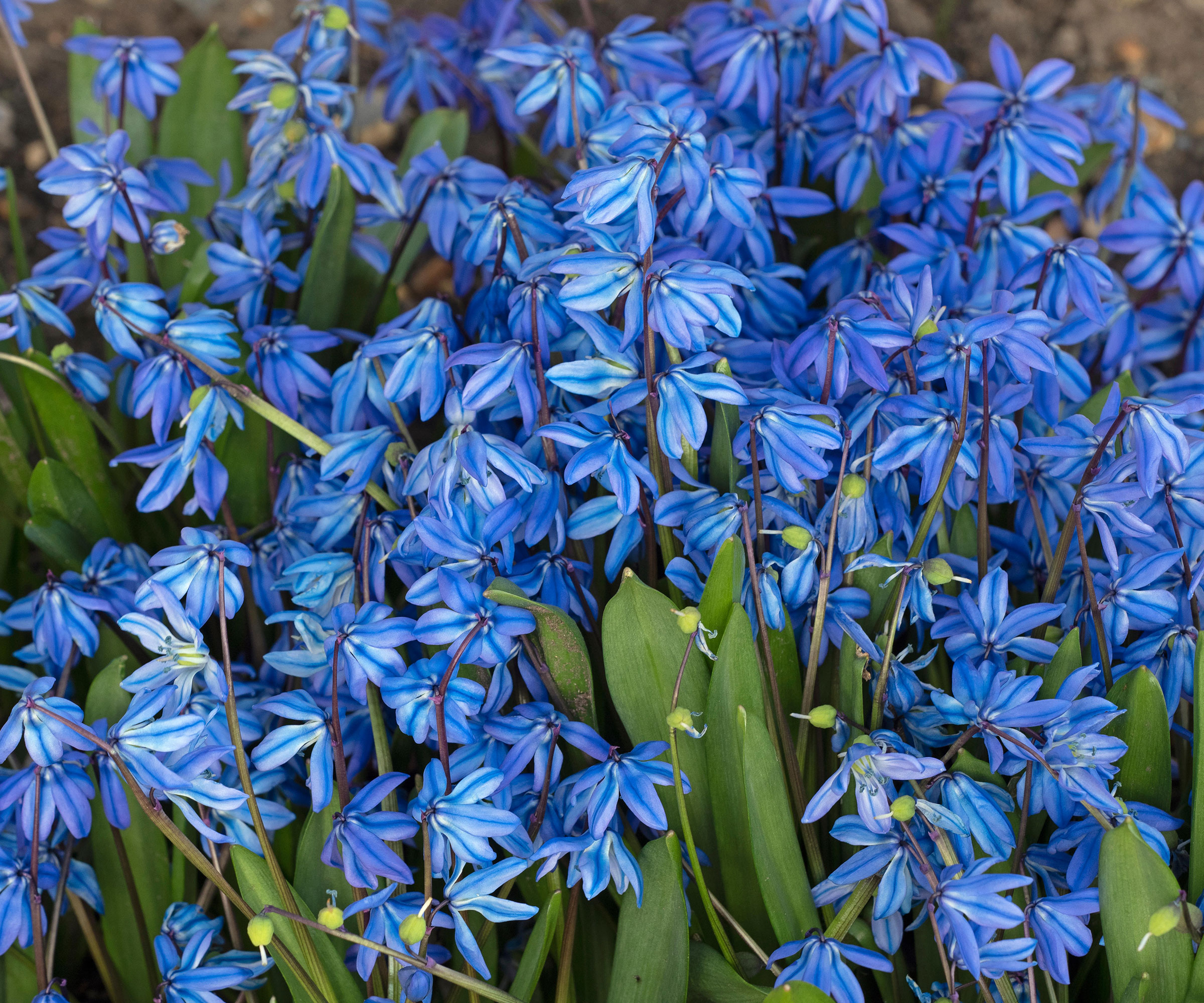
- US hardiness zones: 4-8
- Planting time: September to November
- Flowering time: Early spring
Scilla appear in early spring with their dark blue star-shaped flowers twinkling above the foliage. These miniature bulbs are often planted densely, allowed to naturalize areas or used to poke through short grass.
Scilla should be grown in full sun or partial shade, with bulbs planted in mid-to-late fall. The bulbs should be put in around 3-4 inches deep, which is shallow compared to many other spring bulbs. This makes it easy to be generous and plant large numbers of scilla in an area.
Scilla are also one of the best bulbs for pots as they can be packed into a container, or used as the top layer of a lasagna gardening scheme of bulbs.
While there are many scilla varieties to choose from, these Siberian squill scilla bulbs from Amazon will give you that classic blue flower look.
4. Iris
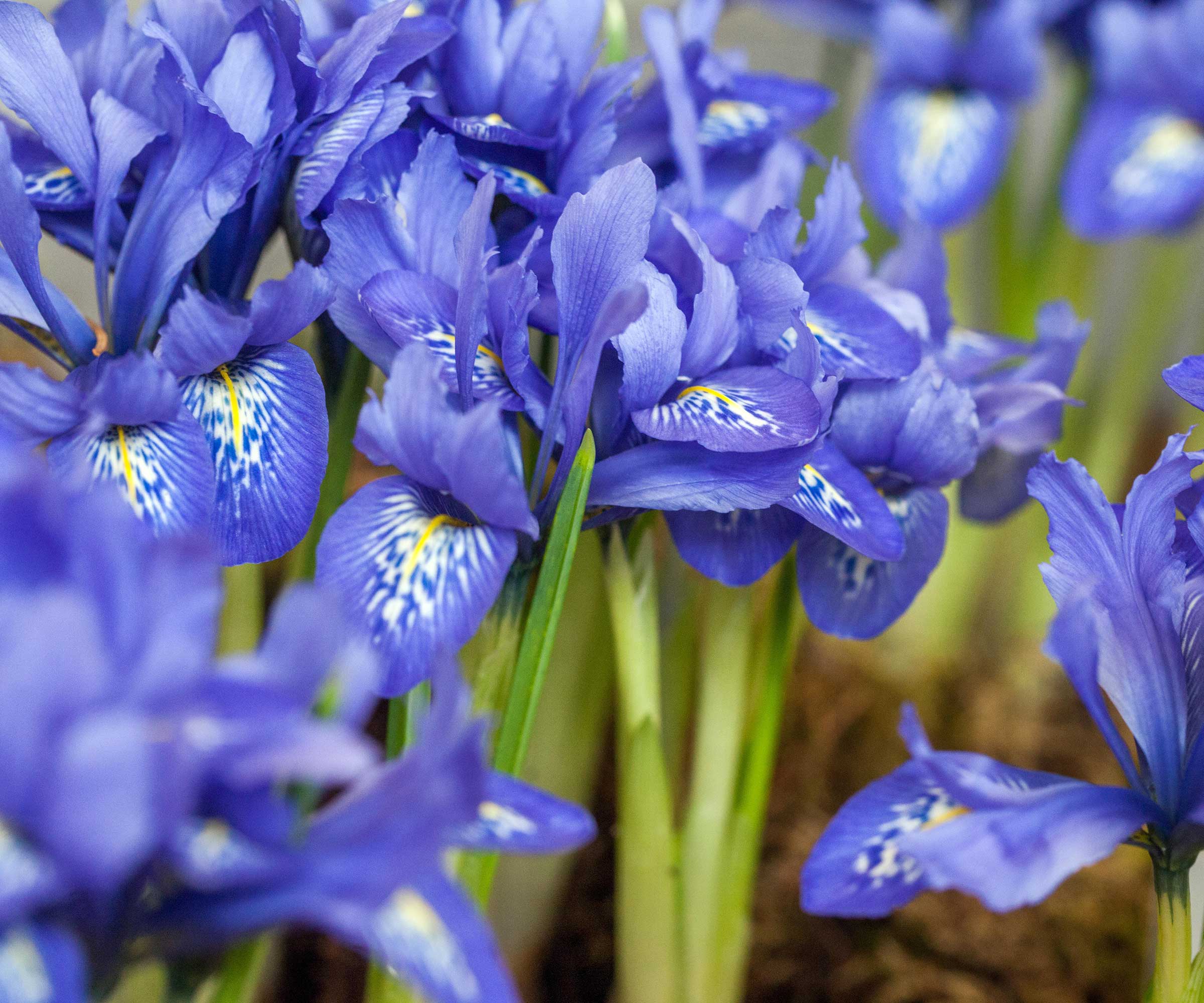
- US hardiness zones: 5-9
- Planting time: September or October
- Flowering time: Early spring
Irises can be used in succession to provide a long season of blooms and are great for spring garden ideas. The winter-flowering irises, such as the dwarf Iris reticulata, can come to the fore in February or March and then be followed by the spring flowering types, such as the Dutch or Siberian irises that are prevalent in mid-spring.
The time to plant iris bulbs is in September or October. Bulbs want to be planted around six inches deep in flower beds or borders, while the dwarf types of iris are most suited to container gardening ideas as their small bulbs can be layered with other spring bulbs.
There are so many beautiful bearded iris varieties and non-bearded iris varieties to choose from for your yard, like these iris flowers from Nature Hills.
Just take care to deadhead irises once they have been spent to encourage returning blooms in the next season.
5. Anemone
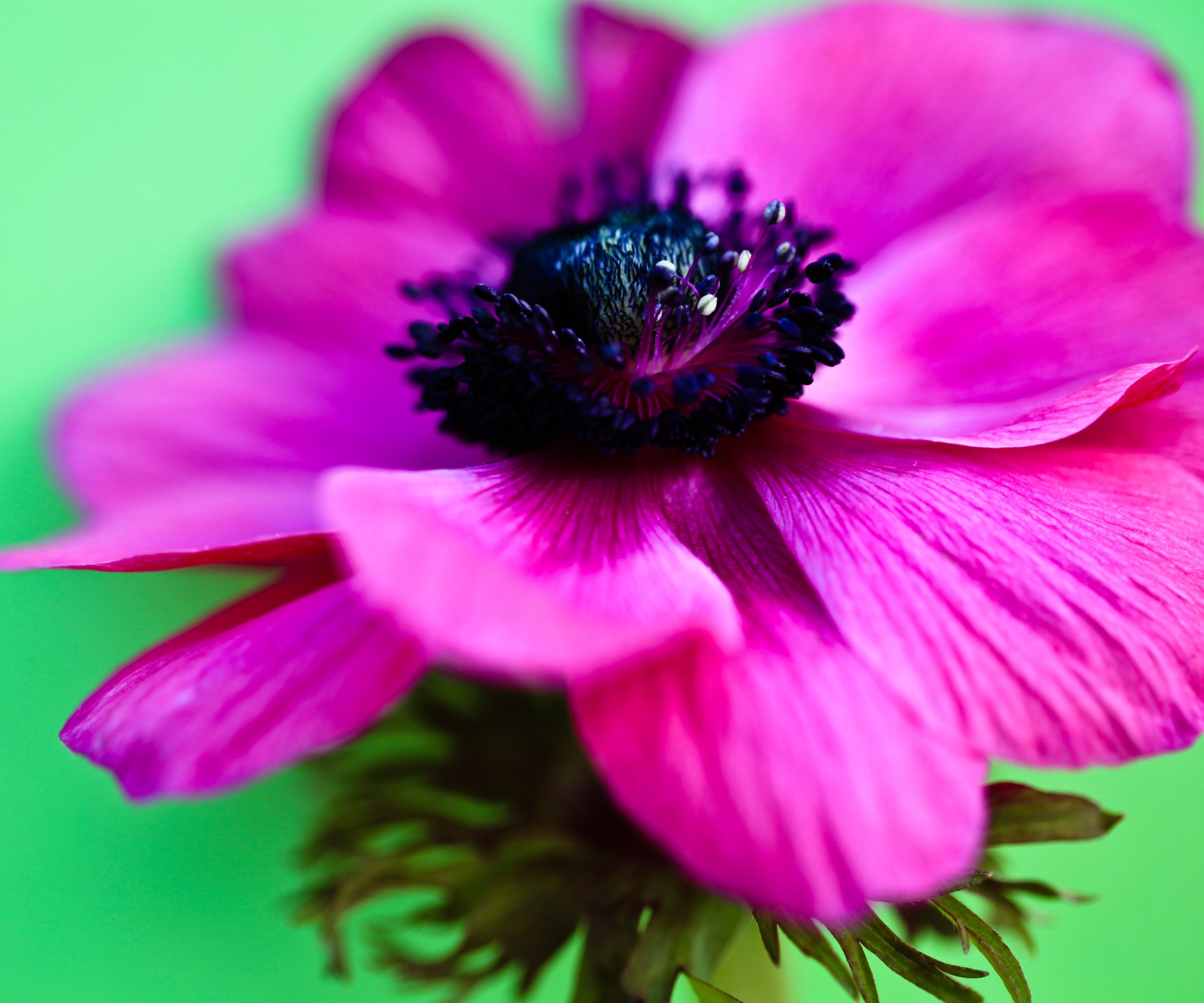
- US hardiness zones: 3-8
- Planting time: September or October
- Flowering time: Early-mid spring
Anemones are showy flowers to include in your spring garden and a popular addition to cut flower gardens. Spring-flowering anemones will bloom from February to April.
'Anemones are technically grown from corms, and they look wonderful when planted with other spring bulbs,' says Rachel Bull, head of gardens at Homes & Gardens. 'Planting anemones in fall to bloom in spring means that you can enjoy their large flowerheads early in the season. They're also cut-and-come-again flowers, meaning they will return and keep blooming when you pick them,' she adds.
When planting anemones for spring, you need to get planting in September or October, around six weeks before the first expected frost. It can be beneficial to soak the anemone bulbs over night before planting them about 4 inches apart and 2 inches deep.
Why not try planting these blue shades woodland anemone bulbs from Nature Hills?
6. Hyacinths
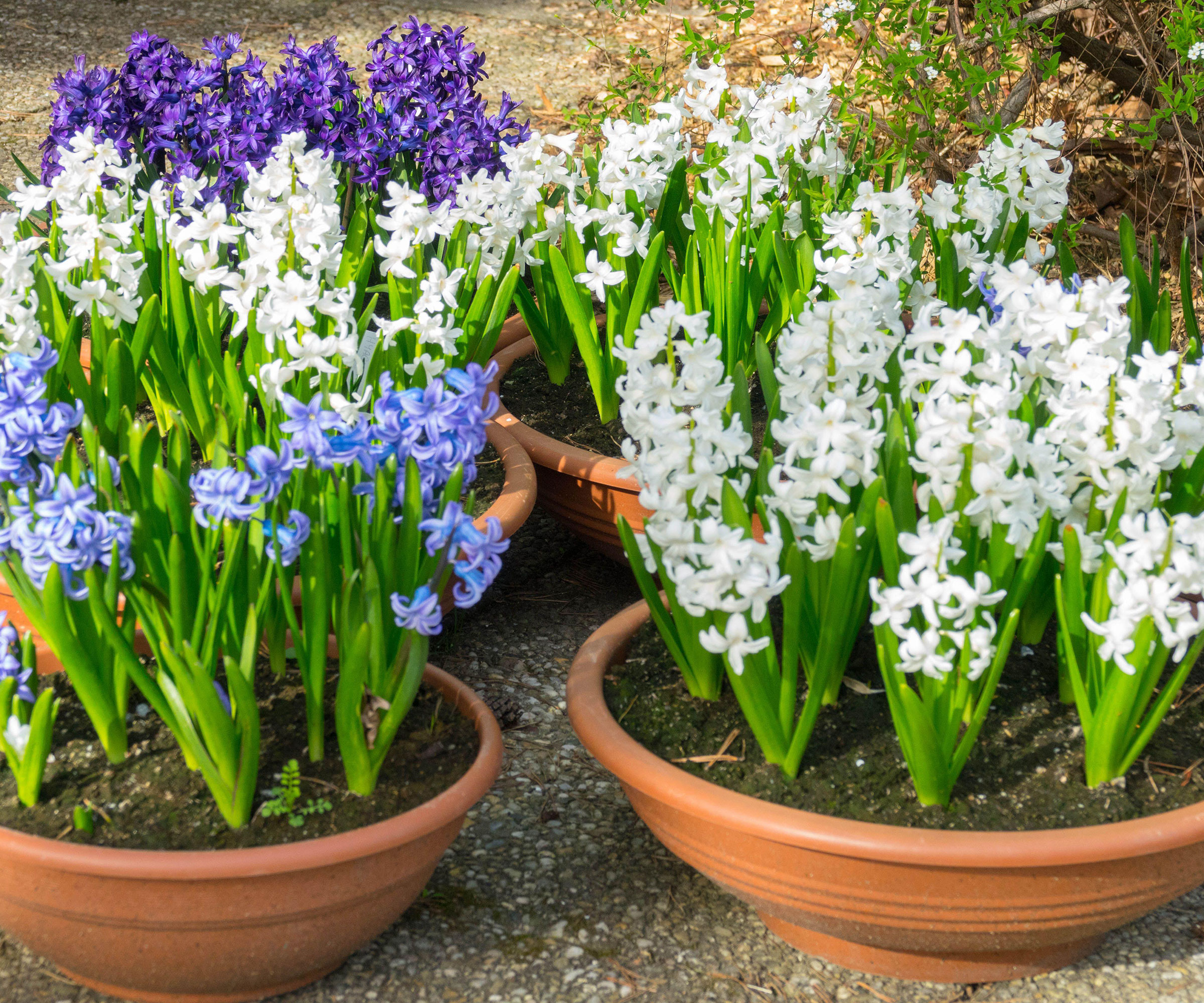
- US hardiness zones: 4-8
- Planting time: September to November
- Flowering time: Mid-spring
The fragrant blooms of different hyacinth varieties comes out in early-to-mid-spring, often appearing around the same time as the daffodils. Coming in a range of colors, they are compact plants and the bulbs each put out a flowering stalk that stands up to 10 inches tall. They can often be accompanied by a second stalk with slightly smaller bloom.
Hyacinth bulbs are best planted in groups during the fall, from September through to November, and put into the ground with the flat root end down and about six inches deep in the soil. Each bulb wants around four inches of space. Take care when handling hyacinth bulbs as they can irritate the skin.
Hyacinths in containers can be packed tightly to make a fantastic display, where the bulbs can be planted much closer together in pots than in the ground. Just be sure to deadhead hyacinths after flowering to encourage returning blooms next year.
See the range of hyacinth bulbs at Nature Hills.
7. Tulips
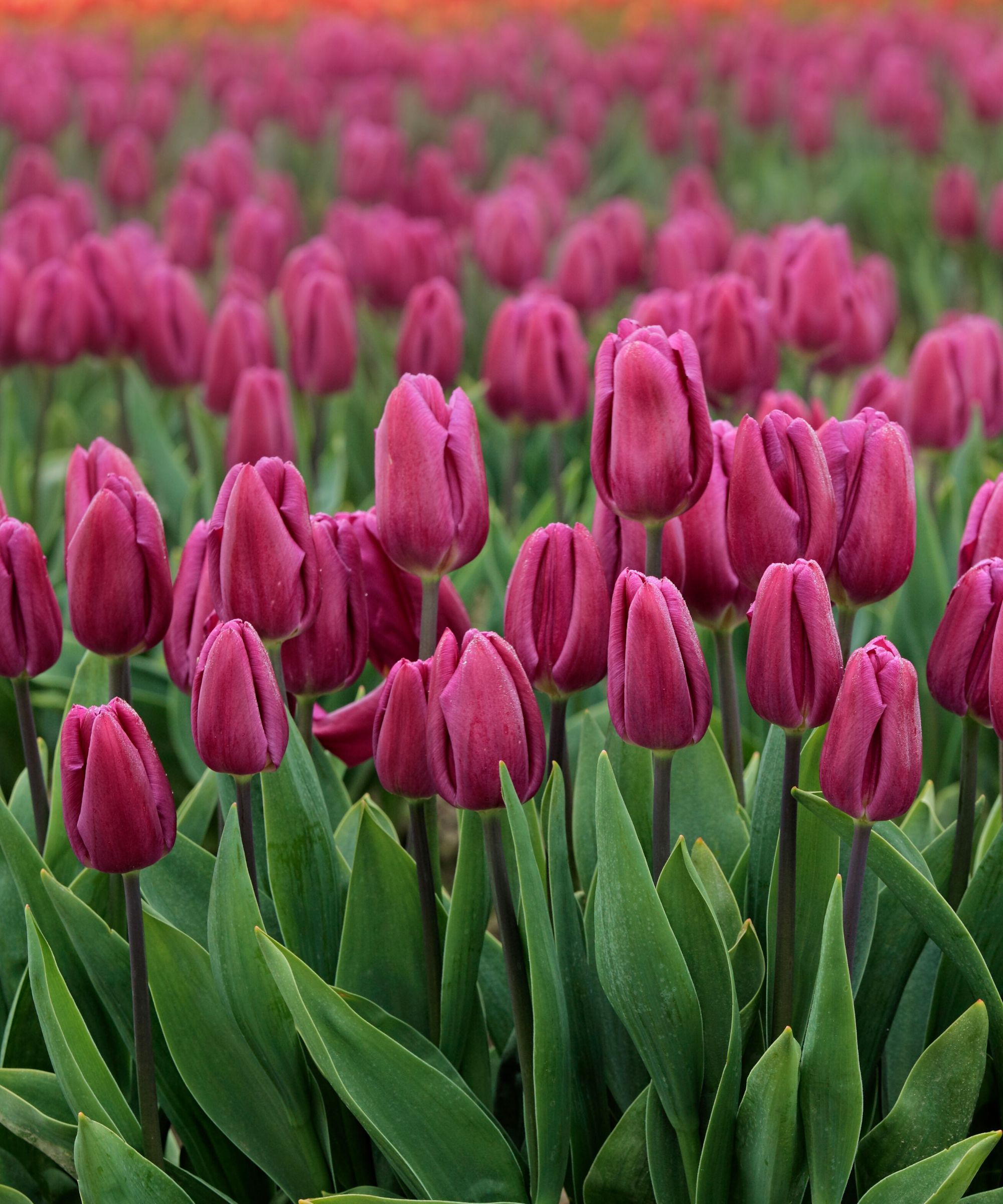
- US hardiness zones: 3-7
- Planting time: October to November
- Flowering time: Early-to-late spring
Tulips are arguably the most famous spring bulb and they are hugely popular to add color to borders during the season. The blooms can come in a wide range of colors and there are early, mid, and late-flowering tulip types to choose from.
'When I attended the tulip festival at Keukenhof in Holland, there were over 800 varieties of tulips and I instantly fell in love with fringed tulips,' says Tenielle Jordison, gardens writer at Homes & Gardens. 'I had the opportunity to visit one of the supplier's nurseries in the Dutch bulb growing region of Holland, where I learned all about how the bulbs of these dazzling beauties with unique color combinations and frilled edges are grown, cleaned and packaged in time for gardeners to plant in fall,' she adds.
No matter what type of tulip you choose, and there is something to be said for mixing different types for a dramatic display, all tulip bulbs are planted in mid-to-late fall at a depth of three times the height of the bulb and at least four inches from each other.
Tulips can be perennial and many choose to deadhead tulips to encourage returning blooms. However, nowadays they are treated more as annuals, as there is a lack of certainty that bulbs will rebloom the following year. So, most gardeners now plant new bulbs every fall.
Find the your perfect combination of tulip bulbs at Nature Hills.
8. Muscari
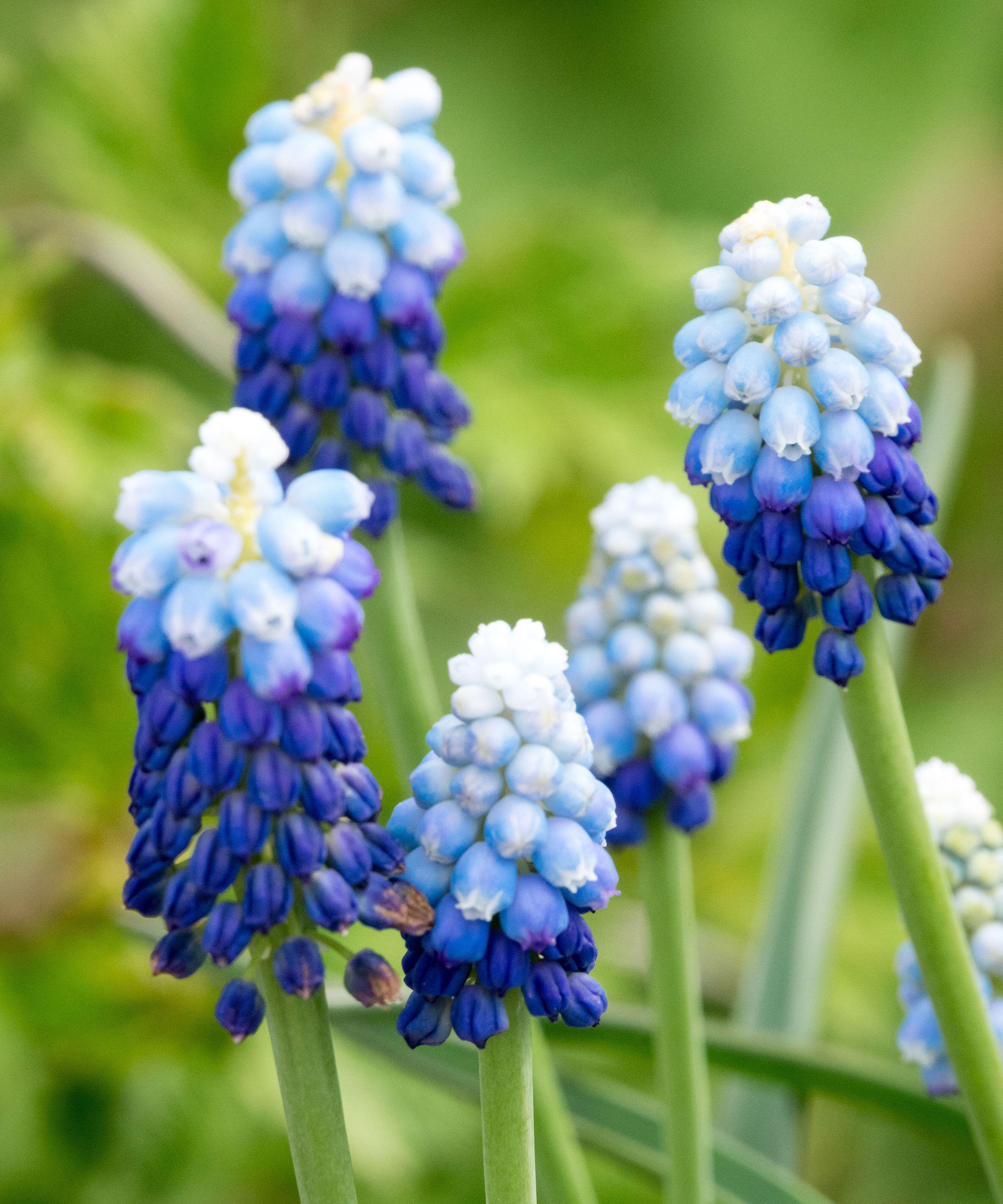
- US hardiness zones: 4-8
- Planting time: September to November
- Flowering time: Mid-spring
Muscari, also known as grape hyacinths, are small spring bulbs that put out bright blue flowers. The fragrant blooms are diminutive at just six inches tall, but they are very wildlife-friendly and their flowers attract bees in the spring.
They're among the best perennial bulbs to plant in fall and should be planted between September and November around four inches deep. Muscari are very versatile and can be put in the front of borders, in containers, used to brighten shady spots, or put in to pop up through a lawn. The blooms will appear year-after-year without fuss, but they do spread so may need lifting or dividing every few years.
You can get muscari flowers of different colors, like this white Siberian tiger muscari from Nature Hills and this dark eyes grape hyacinth from Nature Hills.
9. Snakeshead fritillary
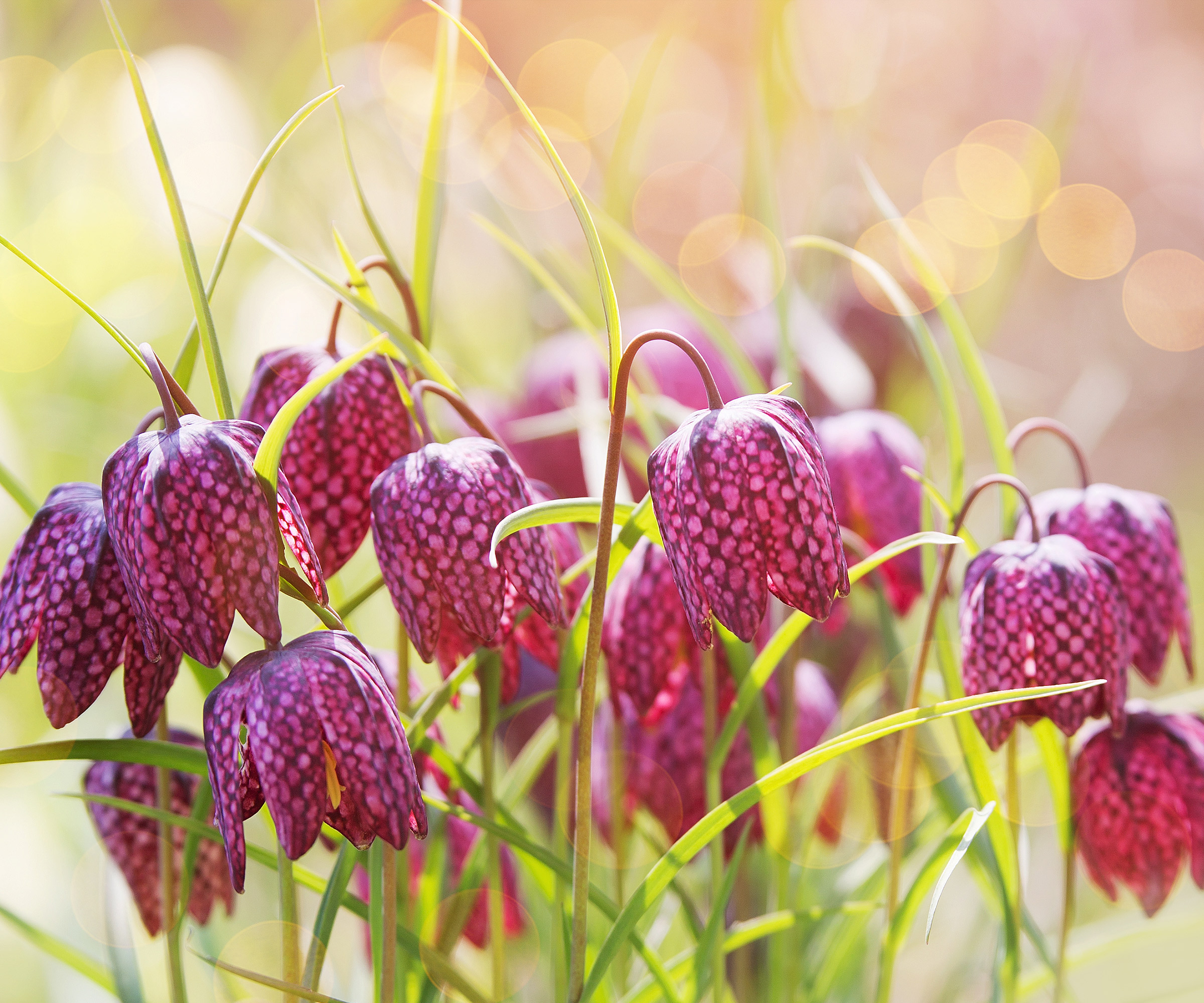
- US hardiness zone: 5-8
- Planting time: September to October
- Flowering time: Mid-spring
Snakeshead fritillary have a distinctive bell-shaped flower head that hangs delicately from a straight and slender stem. The blooms tend to have a chequered pattern in shades of pinks and purples, or white.
There are many different types of fritillaria available and the bulbs are planted in early fall to bloom in mid-spring. The plants want to be in a sunny or part-shade spot but prefer a moist area in which to grow.
'Plant fritillaria bulbs 6-8 inches deep and about a foot apart,' says Meredith Bishop. 'Fritillaries resent being transplanted, so try to find a spot that they will be happen long term. Many people even like to plant these bulbs on their side, which will reduce the chance for water to pool inside their top hollow opening,' she adds.
Fritillaria are often seen naturalized in grassy spots or meadows and will multiply year-on-year when left to grow. Otherwise, snakeshead fritillary can also work perfectly in borders or in containers, either on their own or with other spring bulbs.
Shop for snakeshead fritillary bulbs at Amazon.
10. Crown imperial fritillary
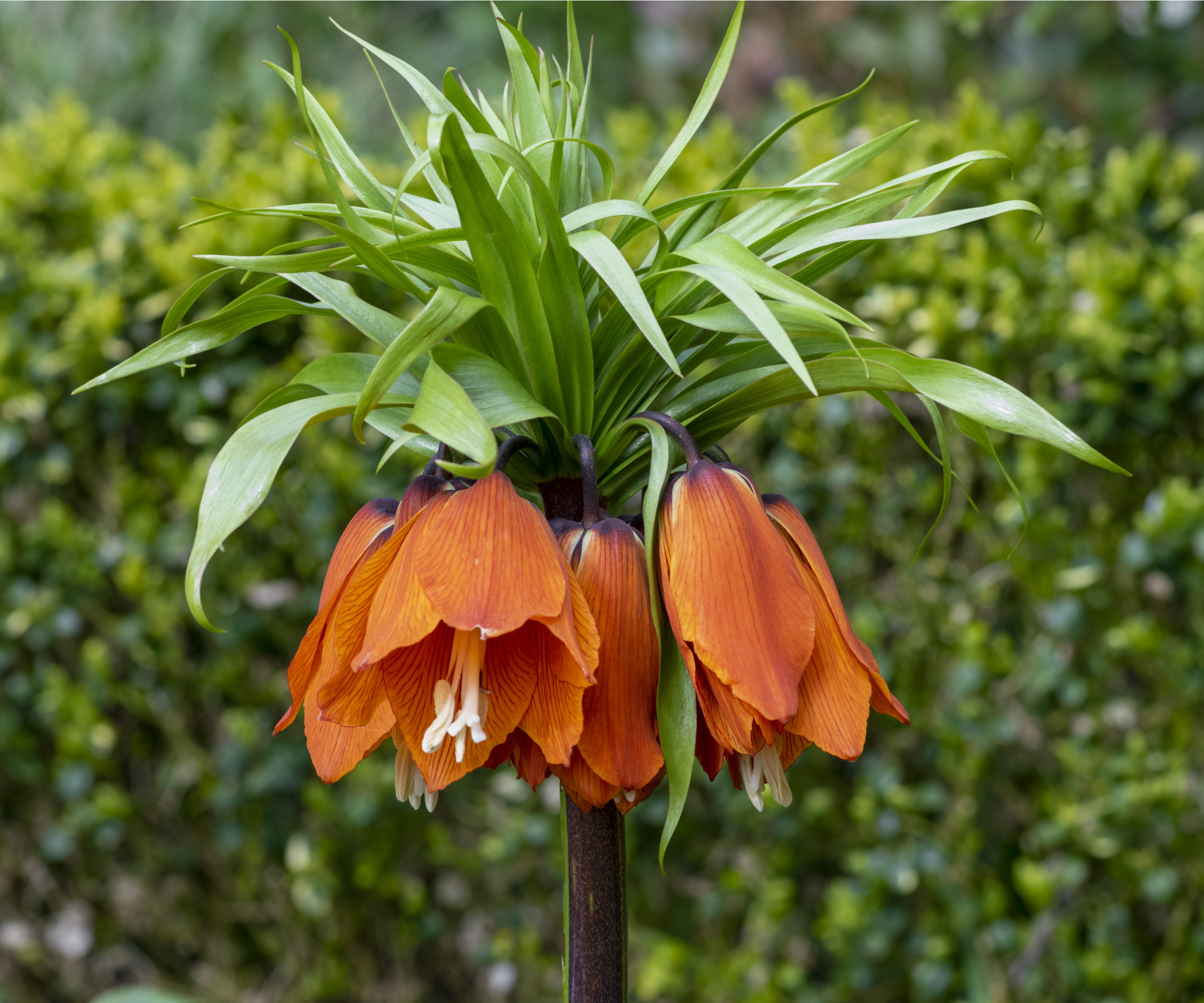
- US hardiness zone: 5-8
- Planting time: September to October
- Flowering time: Mid-spring
An alternative to snakeshead fritillary is the crown imperial. This is an orange variety of fritillaria with a unique trunk-like stem and leafy foliage sprouting above its bell-shaped flowers.
It can reach around 4 feet tall, making it a showstopper for your spring display. The bulbs of crown imperial are larger than snakeshead fritillary bulbs and need to be planted deeply at a around 1ft between September and October.
They're fairly undemanding and their statement appearance makes them perfect for solitary planting in a pot. Alternatively, you can plant a number of them together for an eye-catching display. Just take care to give these plants a sunny spot and keep moisture levels consistent.
Shop for crown imperial bulbs at Amazon.
11. Leucojum
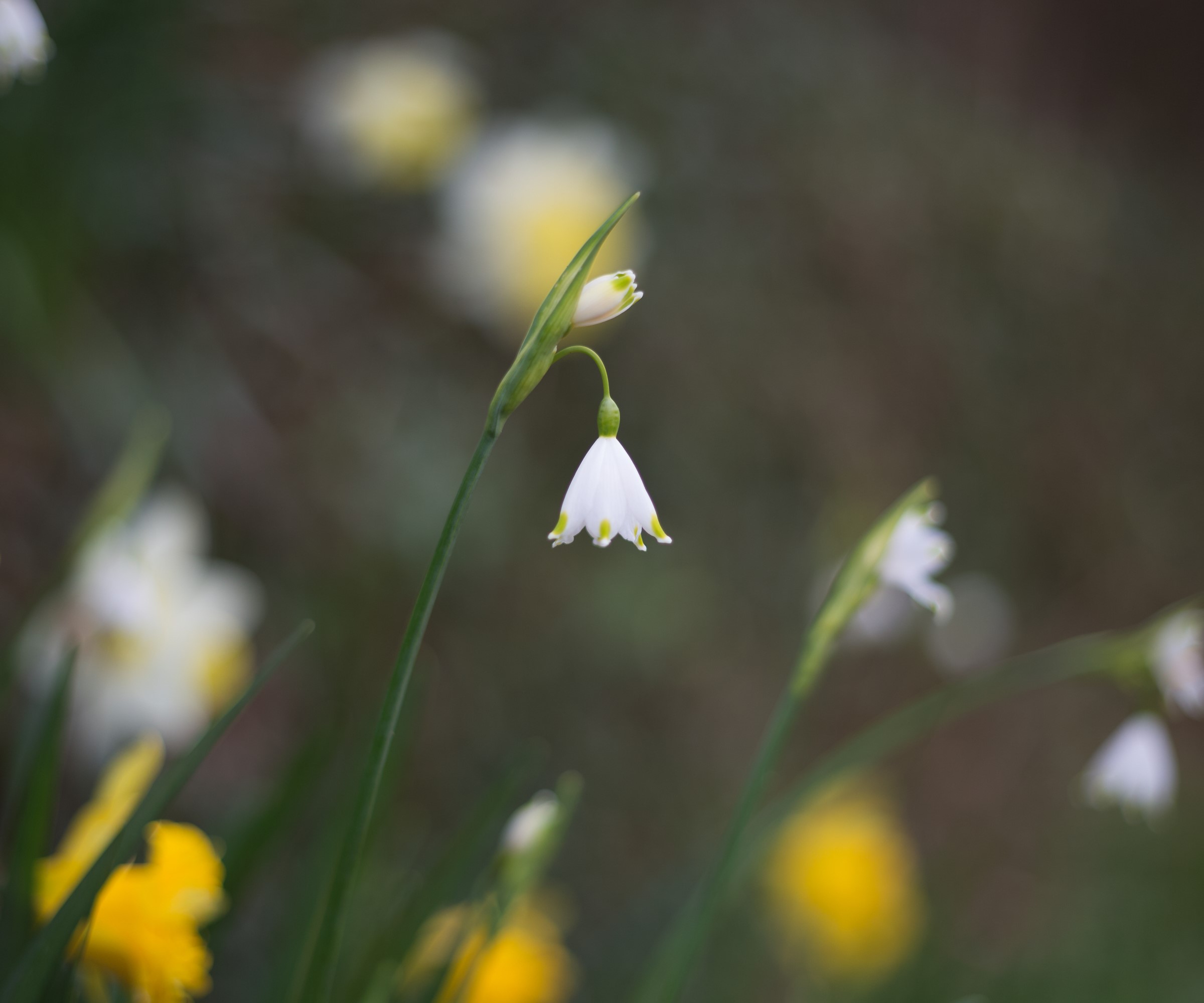
- US hardiness zones: 4-8
- Planting time: September to November
- Flowering time: Late spring
Leucojum, also known as snowflakes, are closely related to snowdrops but not as well known. The main difference between the two is that leucojum flowers later in spring and also puts out taller bell-shaped white flowers. They are close to twice the height of snowdrops and suited to planting in woodland or grassy areas, in flower beds, or in containers.
Leucojum bulbs are planted around six inches deep from September to November and the plants want fertile but well-draining soil. Clumps will increase year-on-year if they are left undisturbed.
Find leucojum bulbs at Amazon to get planting this fall.
12. Allium
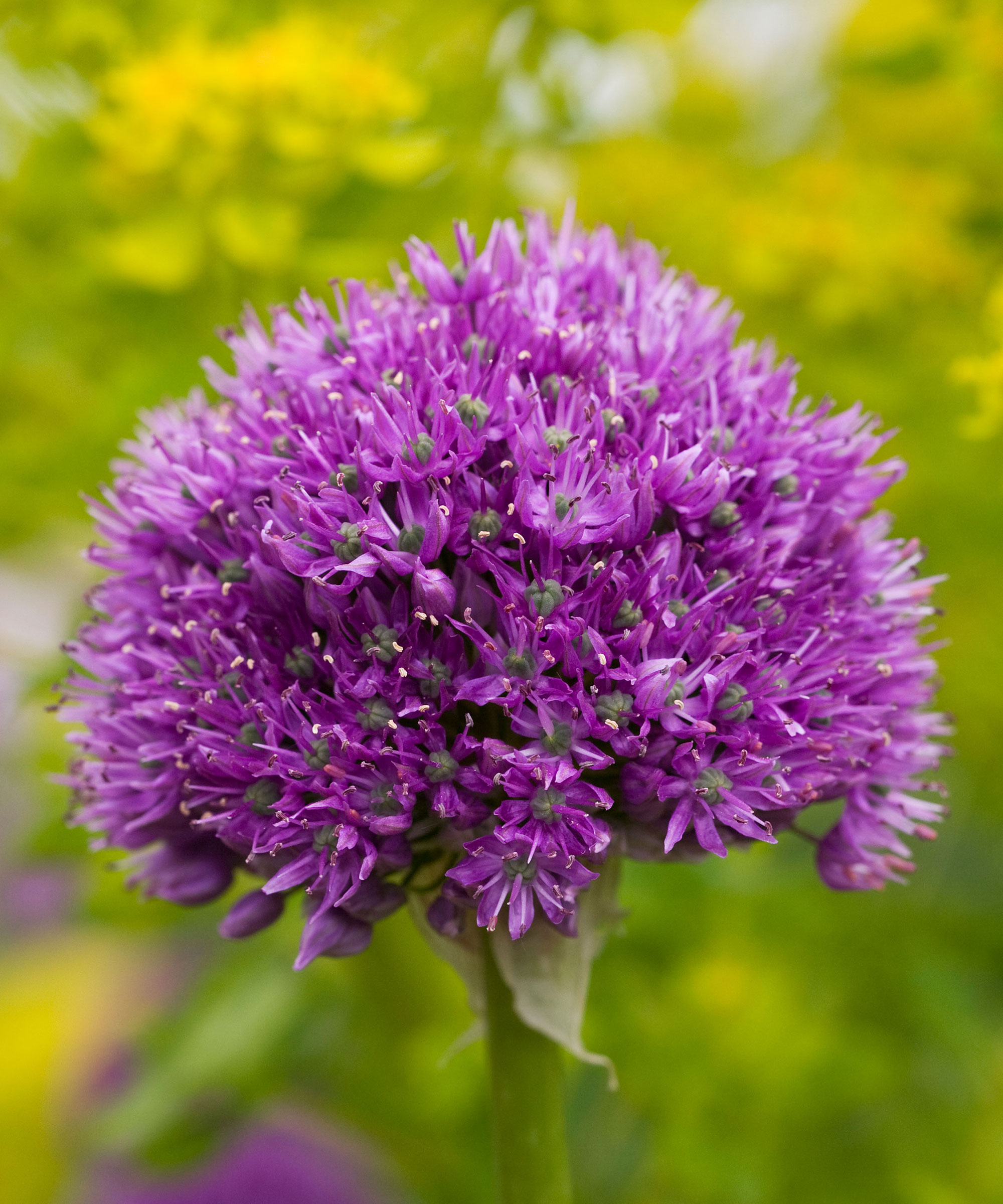
- US hardiness zones: 3-9
- Planting time: September to November
- Flowering time: Late spring
Alliums are spectacular and architectural bulbs that put on a great display of pom pom heads in spring. With allium varieties ranging in height from a mere eight inches up to closer to 45 inches, there are alliums for any scenarios. While most people will think of alliums with purple blooms, they can actually come in shades of blue, pink, yellow, and white too.
Plant allium bulbs between September and November before the ground freezes and get them in deep, up to six inches deep for the larger varieties. Alliums can be utilized for their height as points of interest in flower beds or borders, or they can be put in pots for dramatic displays. Make sure any container size reflects the size of the bulbs you want to place in there.
Don't be too quick to cut them back after flowering, as alliums are also among the best plants for seedheads and can offer sculptural interest for fall.
Arguably the most popular allium, try planting these Allium 'Purple Sensation' bulbs from Nature Hills.
13. Ranunculus
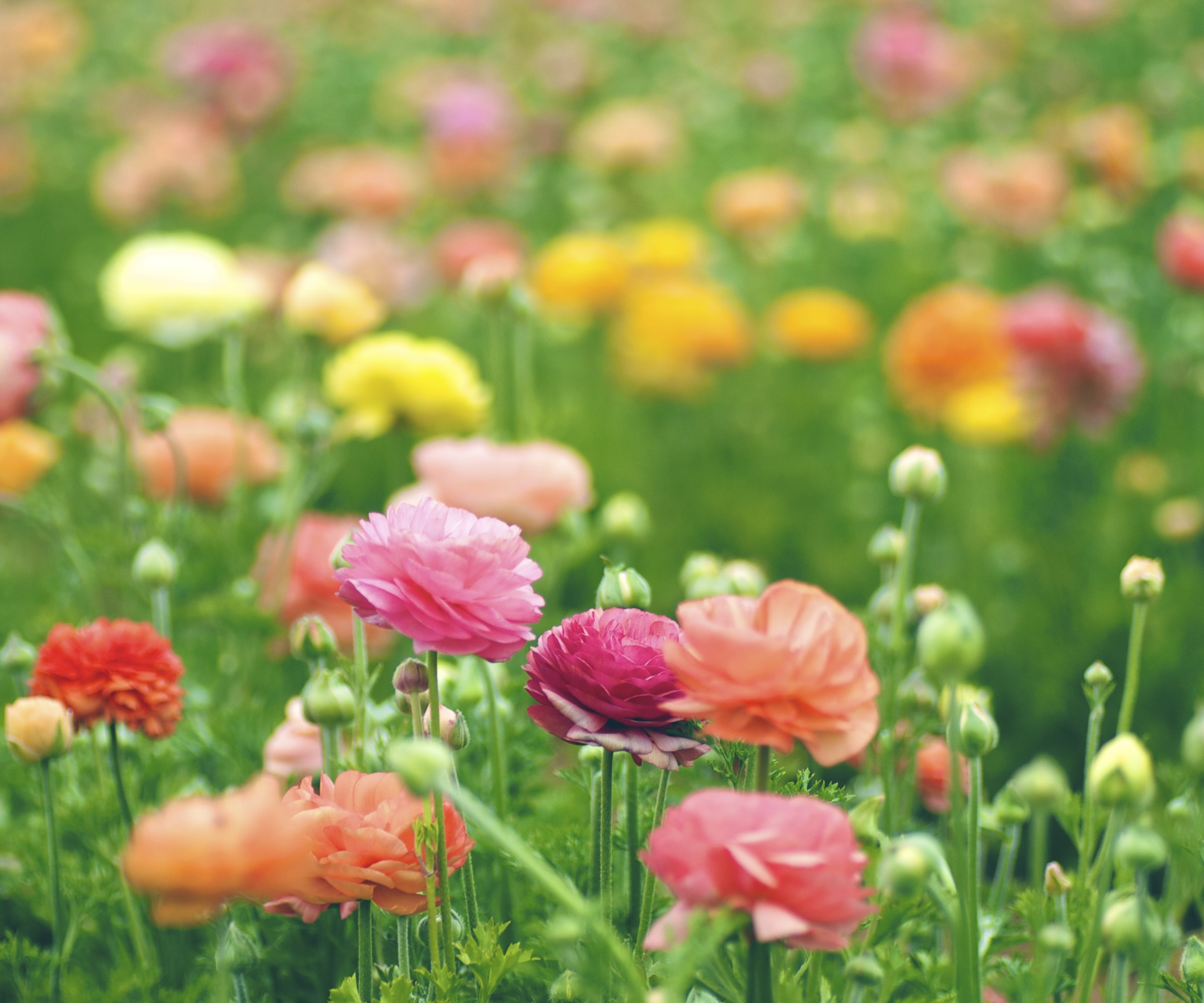
- US hardiness zones: 8-10
- Planting time: September to November
- Flowering time: Late spring
Technically grown from corms, ranunculus is another show bloom to have in your spring garden. They're often called the 'roses of spring' and have a soft appearance in a range of colors from white, to red, pink, orange and yellow. Ranunculus bulbs can be planted in spring or fall, depending on the variety and your local climate.
'Ranunculus corms will do best when pre-sprouted in the fall,' notes Meredith. 'To do this, soak in a bucket of water for four hours to rehydrate the corms, and then place in a single layer onto roughly 2 inches of moist compost spread onto a tray. Leave the tray somewhere cool and dark for about a month,' she advises.
The corms will develop a root system and you might even see some shoots start to grow. 'Individually transplant each corm out into the garden, planting about four to six inches deep and nine inches apart,' says Meredith.
It's best to then grow ranunculus flowers in full sun to keep them blooming and don't let them dry out.
Find the right ranunculus for your yard online, like this white ranunculus from Nature Hills or this pink ranunculus from Nature Hills.
FAQs
When is it too late to plant spring bulbs?
The best spring bulbs need a period of dormancy before blooming, which is why the optimal time to plant the majority of them is in fall. Planting bulbs too late could cause a lack of blooms or a reduced number of blooms. However, it is still possible to plant some spring bulbs as late as February to still get a spring display. The best thing to do is research the optimal time to plant the specific spring bulbs you have to make sure you don't miss the planting window.
Whenever you are planting bulbs it is important to ensure that the soil is loose and well-draining, ideally with organic materials such as compost mixed in. Then use a trowel to make a deep hole, or you can get special bulb planting tools to make the job easier if you have lots of bulbs to plant – such as this bulb planter available at Amazon. Water after planting and, in the case of fall-planted bulbs, consider mulching them to keep the soil moist and protect the bulbs from the worst of the winter weather.







